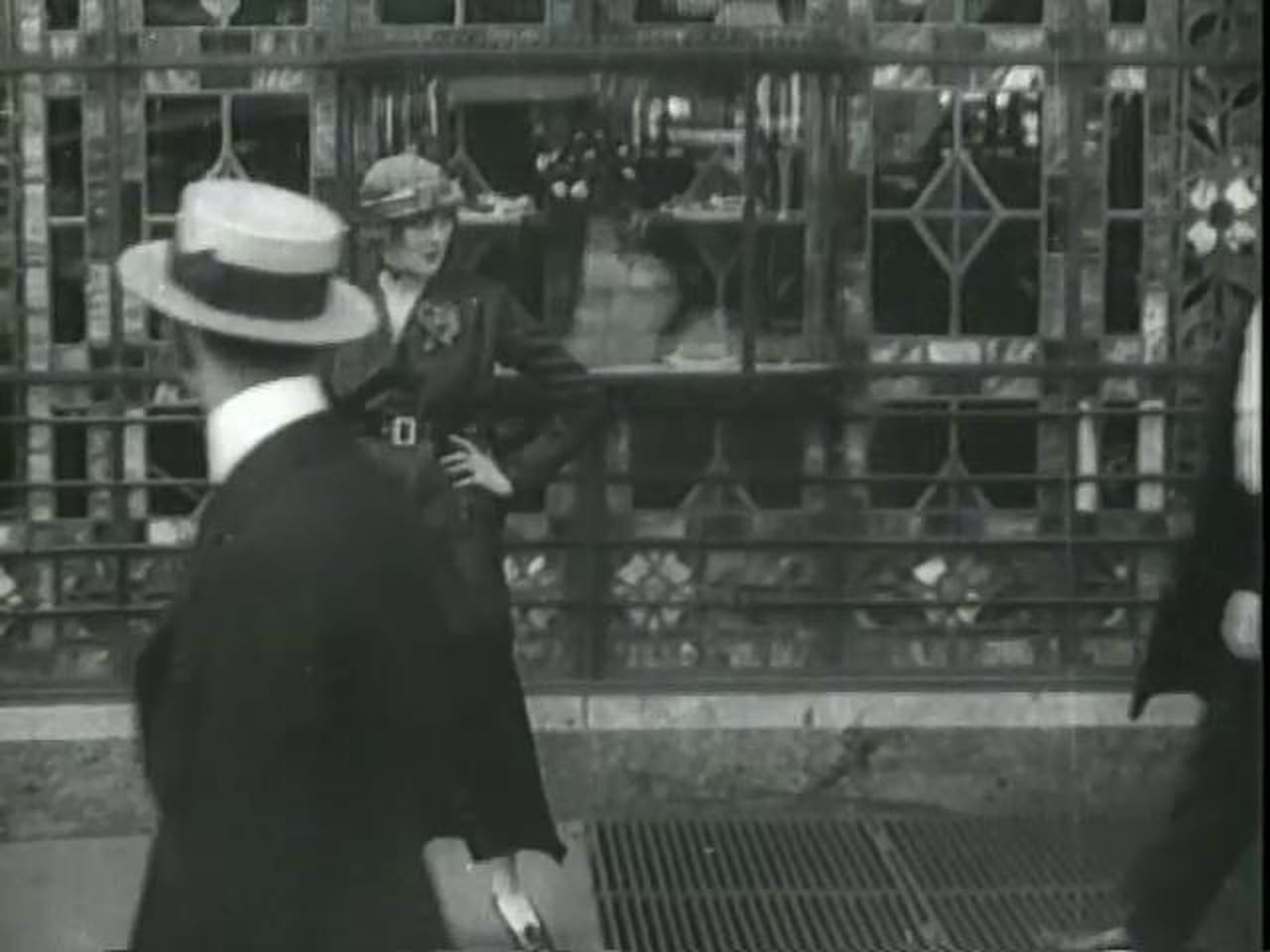THE WORLD AND THE WOMAN
Eugene Moore (US 1916)
When The World and the Woman premiered, advertisements luridly encapsulated the storyline: “A woman stumbling blindly toward the pit!” Reviews called the film “hectic melodrama” (Motography); “great realism” (Motion Picture News); and proclaimed that it was “heartily approved by all sects” (Moving Picture World).
Scriptwriter Philip Lonergan wrote the screenplay, possibly inspired by Hubert Henry Davies’ play Outcast, in which the film’s star Jeanne Eagels had toured in the 1915-16 season. The plot can be summarized thus: Mary, a prostitute, walks the streets of New York City. On a lark, a playboy offers Mary a position as maid at his country home in the Adirondacks. She accepts, and while there befriends a neighboring family. When the playboy visits with his friends, he makes advances on Mary, but she rebuffs him and flees to the neighbors, where she becomes spiritually reborn in Christianity, discovering a gift for faith healing. Mary tries to heal a young cripple but initially loses her confidence; through strength and resolve she regains her power and heals the girl. The playboy repents, befriends Mary, is converted, and promises to marry the one-time streetwalker.
Faith healing (an element completely absent in the play Outcast), was becoming a popular theme in the movies; national curiosity about religious sects, fiery ministers, and hands-on healing with miracles had taken hold of the country. The evangelist/revivalist Billy Sunday was already preaching to large crowds at the start of the century, and faith-based charismatic healer/preacher Aimee Semple McPherson became a national phenomenon starting in the mid-1910s. Their influence can be discerned in some of the intertitles, written by co-editors Martin Cohn and Jack Natteford, such as “Science is skeptic of the healing power of belief; yet thousands testify to its miraculous cures. Mary inspired the same faith that made the lame man take up his bed and walk, and to her came the human wreckage of her little World.” No wonder the film was heartily endorsed by Christian Scientists.
The director W. Eugene Moore (dates unknown; the “W.” was usually left off credits) studied theology before beginning his career as a stage actor, including with Edwin Thanhouser’s theatre company in Milwaukee. In 1912 he shifted towards motion picture directing, making 47 films at Thanhouser up through 1917, often shuttling back and forth between their studios in Jacksonville, Florida, and New Rochelle, New York. After Thanhouser closed, Moore directed at Pathé, then Universal (in charge of some of Baby Marie Osborne’s films), and then Lasalida-Pathé, before making his final feature, Universal’s Sue of the South (1919). Shortly after that film’s release, Moore formed his own production company in March 1919, when it was announced he would “make special pictures for the independent buyers” (Motion Picture News), but nothing seems to have come of this. His name returned to the trade papers in May 1921, when Wid’s Daily reported he was appointed treasurer and director of the newly formed New York-based Blue Jay Comedies, making two-reelers for the independent market. However, the sole title that seems to have been completed by Moore for Blue Jay was Rustling the Hicks, starring Isolde Illian, shot in Mount Kisco, New York, and apparently only screened for a local audience in nearby Mount Vernon (reported in August 1921 in the town’s newspaper, The Daily Argus). Subsequently Moore disappears from view.
Frank Lloyd, who was under contract at the time to Pallas and then moved over to
head up one of Fox’s studios in late 1916, is credited by the IMDb as co-director of The
World and The Woman. However, his name does not appear in the credits, and there
is no factual evidence (from the archives of FrankLloydFilms.com, Ned Thanhouser, or contemporary newspapers and trade journals) that the Hollywood-based Lloyd participated in the feature’s pre-production, filming, editing, or promotion. Lloyd did direct the similarly titled The World and Its Woman (1919; starring Geraldine Farrar), probably the source of the mistaken credit.
Kansas-born Jeanne Eagels (1890-1929) was only 26 when she played Mary, her first major movie role as star, although her stage career had already begun to blossom, culminating in her acclaimed 1922 Broadway appearance as Sadie Thompson in Rain. Included in the supporting cast are 8-year-old Ethelmary Oakland (1909-1999), “Thanhouser’s Little Dare-Devil,” and Thomas A. Curran (1879-1941), whose long career ended playing Teddy Roosevelt in the staged newsreel included in Citizen Kane.
The World and the Woman was shot in Thanhouser’s New Rochelle studio and also on location in New York City and the Adirondack Mountains. Of special technical interest are the three vignettes conceived as superimposed bubbles to simulate visions or apparitions. Only five of the 28 films Thanhouser released through Pathé’s Gold Rooster Plays are known to survive, preserved thanks to the ongoing efforts of Edwin’s grandson, Ned Thanhouser. The newly restored print from George Eastman Museum derives from the Candler Pictures 1921 re-release.
Antonia Guerrero

scen: Philip Lonergan.
didascalie/titles, mont/ed: M.G. [Martin] Cohn, J.F. [Jack] Natteford.
photog: George Webber.
cast: Jeanne Eagels (La donna/The Woman), Boyd Marshall (L’uomo/The Man), Thomas A. Curran (James Palmer), Grace De Carlton (Mrs. Rollins), Wayne Arey (Jim Rollins), Carey Hastings (Anna Graham), Ethelmary Oakland (Sunny).
prod: Thanhouser Film Corp.
dist: Pathé Exchange, Gold Rooster Play.
uscita/rel: 19.11.1916 (5 rl.).
copia/copy: 35mm, 4390 ft., 74′ (16 fps); did./titles: ENG.
fonte/source: George Eastman Museum, Rochester, NY.


 Italiano
Italiano